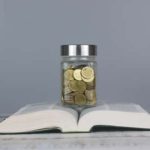1. Why an Emergency Fund is Essential
Life is unpredictable, and unexpected expenses can arise at any time. Whether its a medical emergency, car repair, or sudden job loss, having an emergency fund ensures youre financially prepared for lifes surprises. Without one, you might have to rely on credit cards or loans, which can lead to debt and financial stress.
How an Emergency Fund Protects You
An emergency fund serves as a financial safety net, helping you cover essential expenses when the unexpected happens. Here are some key ways it protects you:
(1) Prevents Debt Accumulation
Without savings, you may need to borrow money during emergencies, leading to high-interest debt that can be difficult to repay.
(2) Covers Unexpected Expenses
From medical bills to urgent home repairs, an emergency fund allows you to handle these costs without disrupting your budget.
(3) Provides Peace of Mind
Knowing you have funds set aside for emergencies reduces stress and allows you to focus on long-term financial goals.
Common Financial Emergencies
Your emergency fund should be able to cover various types of unexpected expenses. Below are some common financial emergencies:
| Emergency Type | Description |
|---|---|
| Medical Bills | Unexpected healthcare costs not covered by insurance. |
| Car Repairs | Unplanned vehicle maintenance or accidents. |
| Job Loss | A sudden loss of income due to layoffs or other reasons. |
| Home Repairs | Urgent fixes like plumbing or roof damage. |
| Family Emergencies | Travel expenses or support for a loved one in crisis. |
How Much Should You Save?
The amount needed in your emergency fund depends on your personal situation. A general rule of thumb is to save 3-6 months worth of living expenses. However, if you have dependents or an irregular income, you may need more.
2. How Much Should You Save?
Determining the right amount for your emergency fund depends on several factors, including your monthly expenses, income stability, and personal financial situation. A well-funded emergency savings account provides a financial cushion that helps cover unexpected costs without relying on credit cards or loans.
(1) General Savings Guidelines
Financial experts typically recommend saving at least three to six months worth of essential living expenses. However, the exact amount varies based on your job security, family size, and other obligations.
| Income Stability | Recommended Emergency Fund |
|---|---|
| Stable income (e.g., government jobs, long-term contracts) | 3 months of essential expenses |
| Moderate stability (e.g., commission-based jobs, small business owners) | 6 months of essential expenses |
| Unstable income (e.g., freelancers, gig workers) | 6-12 months of essential expenses |
(2) Calculating Your Emergency Fund Goal
The best way to determine your savings target is by calculating your necessary monthly expenses and multiplying them by the recommended number of months. Essential expenses include:
- Rent or mortgage payments
- Utilities (electricity, water, internet)
- Groceries and basic necessities
- Health insurance and medical costs
- Transportation (gas, car payments, public transit)
- Debt payments (minimum required amounts)
- Other critical expenses specific to your lifestyle
(1) Example Calculation
If your essential monthly expenses total $3,000 and you want to save for six months, your emergency fund goal would be:
$3,000 x 6 = $18,000
(3) Adjusting Based on Personal Circumstances
Your ideal emergency fund amount may differ depending on various life situations. Consider adjusting your savings goal if you:
- Aspire to change jobs soon: Save more to cover potential employment gaps.
- Aren’t covered by health insurance: Increase savings to prepare for medical emergencies.
- You have dependents: Account for additional household needs.
- You own a home: Factor in unexpected repairs or maintenance costs.
(1) When to Save More Than Six Months’ Worth?
If youre in a high-risk industry or rely heavily on freelance income, consider building a larger emergency fund—closer to 9-12 months of expenses—to provide additional security.
(2) When a Smaller Fund May Be Sufficient?
If you have minimal financial responsibilities or strong support systems (such as living with family), saving three months worth may be enough for short-term emergencies.

3. Where to Keep Your Emergency Fund
Choosing the right place to store your emergency fund is just as important as deciding how much to save. You want your money to be easily accessible while also earning some interest. Here are some of the best options for storing your emergency savings.
High-Yield Savings Accounts
A high-yield savings account is one of the best places to keep your emergency fund. These accounts offer higher interest rates than traditional savings accounts, helping your money grow over time.
Benefits of High-Yield Savings Accounts
- Higher interest rates compared to standard savings accounts
- FDIC or NCUA insured, ensuring safety
- Easy access when you need the funds
Things to Consider
- Some banks may have withdrawal limits per month
- Interest rates can fluctuate over time
Money Market Accounts
Money market accounts (MMAs) are another great option, offering a mix of savings and checking account features. They typically provide competitive interest rates and limited check-writing capabilities.
Benefits of Money Market Accounts
- Higher interest rates than traditional savings accounts
- Check-writing and debit card access in some cases
- FDIC or NCUA insured for added security
Things to Consider
- May require a higher minimum balance
- Limited number of withdrawals per month
Comparing Your Options
The table below compares high-yield savings accounts and money market accounts to help you decide which is best for your emergency fund.
| Feature | High-Yield Savings Account | Money Market Account |
|---|---|---|
| Interest Rate | Higher than regular savings | Similar or slightly higher than high-yield savings |
| Liquidity & Access | Online transfers, ATM withdrawals (limited) | Checks, debit card, online transfers (limited) |
| Minimum Balance Requirement | No or low minimum balance required | Tends to have a higher minimum balance requirement |
| FDIC/NCUA Insurance | Yes, up to $250,000 per depositor per bank | Yes, up to $250,000 per depositor per bank |
| Main Advantage | Easier access with good interest rates | Slightly better interest rates with additional access options like checks/debit cards |
| Main Drawback | Potential withdrawal limits per month | Higher minimum balance requirements and limited withdrawals per month |
Other Safe Alternatives for Your Emergency Fund
(1) Certificates of Deposit (CDs)
If you don’t anticipate needing immediate access to all of your emergency fund, a short-term CD could be an option. However, CDs come with early withdrawal penalties if you need the money before maturity.
(2) Treasury Bills (T-Bills)
Treasury bills are backed by the U.S. government and offer a safe place for your money. They can be a good option if youre looking for stability and don’t need instant liquidity.
(3) A Combination Approach
You don’t have to put all your emergency funds in one place. Many people use a combination approach—keeping a portion in a high-yield savings account for immediate needs and the rest in a money market account or short-term CDs for better growth.
Selecting the right place for your emergency fund depends on your financial situation and how quickly you might need access to the money. By weighing the benefits and drawbacks of each option, you can make an informed decision that keeps your funds safe while maximizing their growth.
4. How to Build Your Emergency Fund
Building an emergency fund may seem overwhelming at first, but with the right approach, you can steadily grow your savings over time. Here are some practical steps to help you get started.
Step (1): Set a Realistic Goal
Before you start saving, determine how much you need in your emergency fund. A good rule of thumb is to aim for three to six months’ worth of essential expenses. Consider factors such as rent, utilities, groceries, insurance, and transportation costs.
Step (2): Create a Budget
A well-structured budget helps you identify how much money you can set aside each month. Break down your income and expenses to see where you can make adjustments.
| Category | Monthly Amount |
|---|---|
| Income | $X,XXX |
| Rent/Mortgage | $X,XXX |
| Utilities | $XXX |
| Groceries | $XXX |
| Savings for Emergency Fund | $XXX |
| Other Expenses | $XXX |
Step (3): Cut Unnecessary Expenses
If youre struggling to save, look for areas where you can reduce spending. Small changes can add up over time.
(1) Cancel Unused Subscriptions
Review your monthly subscriptions and cancel any that you don’t use regularly.
(2) Cook at Home More Often
Dine out less frequently and prepare meals at home to save money on food expenses.
(3) Shop Smart
Look for discounts, use coupons, and avoid impulse purchases.
Step (4): Set Up Automatic Transfers
A simple way to ensure consistent savings is by setting up automatic transfers from your checking account to your emergency fund. Choose a fixed amount that fits your budget and schedule transfers weekly or monthly.
Step (5): Use Windfalls Wisely
If you receive a tax refund, bonus, or unexpected cash gift, consider putting a portion of it directly into your emergency fund instead of spending it immediately.
5. When and How to Use Your Emergency Fund
Life is full of surprises, and sometimes those surprises come with a hefty price tag. Your emergency fund is there to provide financial security during unexpected situations. But when should you use it, and how can you ensure it remains available for future emergencies? Lets break it down.
When Should You Use Your Emergency Fund?
An emergency fund should only be used for genuine financial emergencies—situations that are urgent, necessary, and unexpected. Here are some examples:
| Emergency Type | Examples |
|---|---|
| Medical Expenses | Unexpected hospital visits, urgent surgeries, or out-of-pocket medical costs |
| Job Loss | Covering rent, groceries, and essential bills while searching for a new job |
| Major Car Repairs | Essential repairs needed to keep your vehicle operational for work or daily needs |
| Home Repairs | Urgent fixes like plumbing issues, roof leaks, or heating system failures |
| Family Emergencies | Travel expenses due to a family crisis or sudden caregiving responsibilities |
When NOT to Use Your Emergency Fund
Your emergency fund is not meant for discretionary spending. Avoid using it for:
- Vacations or entertainment
- Non-essential shopping (e.g., new electronics or clothing)
- Investments or business ventures
- Paying off non-urgent debt (unless its causing financial hardship)
How to Replenish Your Emergency Fund After Use
If you need to tap into your emergency savings, its crucial to rebuild it as soon as possible. Follow these steps:
(1) Assess the Amount Used
Determine how much of your emergency fund was spent and set a goal to restore it.
(2) Adjust Your Budget
Temporarily cut back on non-essential expenses like dining out or subscriptions to redirect funds toward replenishing your savings.
(3) Allocate Extra Income
If you receive bonuses, tax refunds, or side hustle income, use a portion of it to rebuild your emergency fund faster.
(4) Automate Savings Contributions
Set up automatic transfers from your checking account to your emergency fund each month.
(5) Look for Additional Savings Opportunities
Selling unused items, reducing utility costs, or negotiating bills can help free up extra cash.
The Bottom Line: Keep Your Emergency Fund Ready
Your emergency fund is a safety net that provides peace of mind in uncertain times. Use it wisely and prioritize replenishing it after use so youre always financially prepared for lifes unexpected moments.


